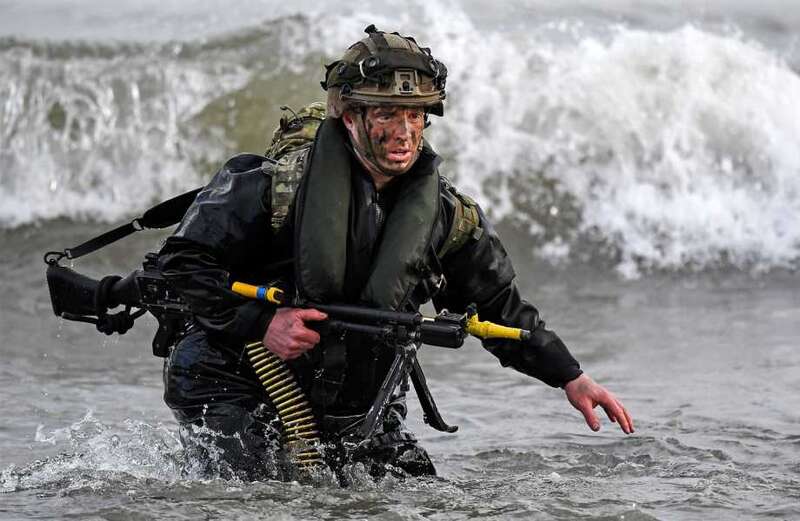THE Royal Navy is facing disaster. It seems to be losing ships faster than Putin’s Black Sea Fleet.
Not because of hostile threats. Rather, there aren’t enough sailors to crew them.

It’s not just their fault. It’s ours.
There are few greater honours than serving this country — but too few people want to do it.
In 2020, then-PM Boris Johnson vowed to “restore Britain’s position as the foremost naval power in Europe”.
 From tongue scraping to saying no, here are 12 health trends to try in 2023
From tongue scraping to saying no, here are 12 health trends to try in 2023
Today, Defence Secretary Grant Shapps looks set to axe four warships — two frigates and two amphibious assault ships — shrinking the fleet to its smallest size in centuries.
The loss of the frigates HMS Westminster and HMS Argyll will leave the Navy with just nine frigates in service.
When the assault ships HMS Albion and HMS Bulwark are mothballed, the Senior Service will have nothing to support a full-scale amphibious assault.
That puts the future of the Royal Marines in doubt.
The elite commando force are the UK’s specialist amphibious troops.
They drove landing craft at D-Day in 1944, stormed San Carlos sound in the Falklands War in 1982 and the Al-Faw peninsular in the 2003 invasion of Iraq.
Without the means to perform that role, Shapps has asked the First Sea Lord to “produce a plan” for the commandos’ future.
These aren’t the only problems.
Recruiting is such a mess the Navy had to advertise for an admiral on LinkedIn to run the submarine service.
Civilian contractor Serco has been asked to try to find staff to bolster the crews of the Royal Fleet Auxiliary.
 How to de-clutter if you have a beauty stash to last you a lifetime
How to de-clutter if you have a beauty stash to last you a lifetime
The aircraft carrier HMS Prince of Wales — which the Navy proudly boasts is the most advanced warship ever built — spent nine months in dock for repairs after a propeller shaft broke in the Solent.
The nuclear submarine HMS Vanguard spent seven years in a refit that ran £300million over budget — and contractors used superglue to fix snapped bolts in the reactor chamber.
Part of the problem, as always, is money.
‘War for talent’
This time last year, when Ben Wallace was Defence Secretary, he asked the Treasury for £11billion to keep pace with inflation.
He was given £5billion, of which £3billion went on revamping the Trident nuclear deterrent and the rest on replenishing ammunition and kit which had been given to Ukraine.
But none of this explains why the Navy can’t get enough people.
It is currently about 1,500 personnel short of its 30,450 target.
That gap is set to get worse as the number of sailors leaving continues to outstrip recruits.
The First Sea Lord, Admiral Sir Ben Key, said last year that he was fighting “a war for talent”.
The people his service needs most are engineers, who could easily earn far more money, for far less risk and hardship, crunching numbers in the City.
These are the same school leavers who are already in high demand because of a shortage of students studying STEM subjects — science, technology and maths.
Key also acknowledged that youngsters today don’t want to spend months at sea in a nuclear submarine, cut off from their loved ones and without so much as a mobile phone.
The challenge of “connectivity” is only getting harder as submarine patrols get longer — the record was set at more than six months last year — due to too few working subs on the rota.
Top brass have suggested cutting standards, from security vetting to medical tests, that form barriers to entry.
Part of the problem is what the Navy offers.
Join the Navy, see the world, which used to be the recruiting mantra, no longer holds the same appeal in the era of low-cost travel.
Pay is average.
Housing is, sadly, too often appalling. And too few people understand the rewards of military life.
But there is something more fundamental.
As our Armed Forces dwindle, fewer and fewer people know a friend or a loved one who has served.
They don’t know what it means to serve.
Facing off against rebels
It is not just a UK problem.
The Royal Canadian Navy is in a “critical state” due to personnel shortages.
Its commander, Vice Admiral Angus Topshee, warned it could “fail to meet” its commitments this year.
Across the merchant navy there is a nine per cent shortfall in recruitment.
In Germany, Defence Minister Boris Pistorius had suggested bringing back national service.
He said it was a “mistake” to phase it out in 2011 as it had alienated ordinary people from the military.
The head of Germany’s Navy, Jan Christian Kaack, praised a Norwegian model where all 19-year-olds are called in for tests but only a small, eager group gets drafted into the military.
Britain is a long way from bringing back National Service.
But we would do well to be a bit more grateful for the people who do serve our country.
The prestige they deserve is priceless.
It is a tribute to the Navy’s sailors that they will soon have seven warships in the Gulf facing off against Houthi rebels.
Far from home and in harm’s way: They are the Royal Navy. We need more people like them.


































